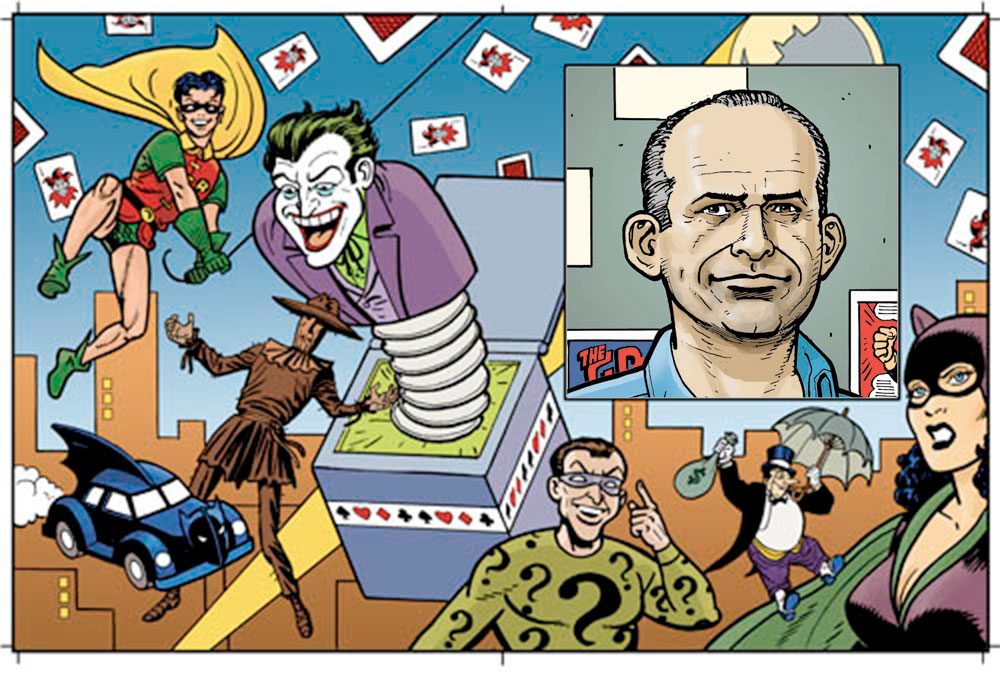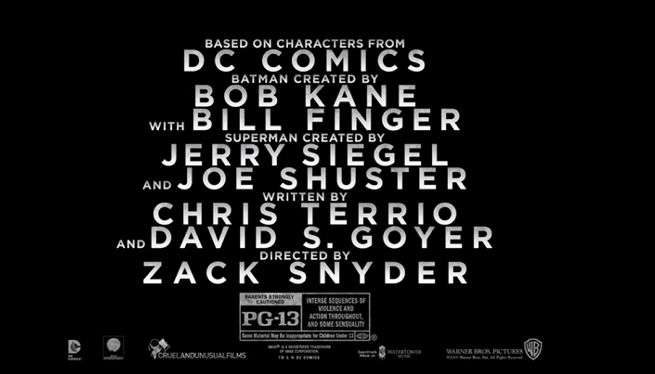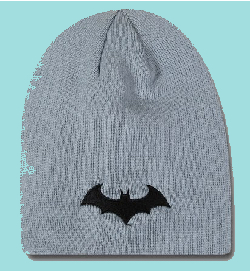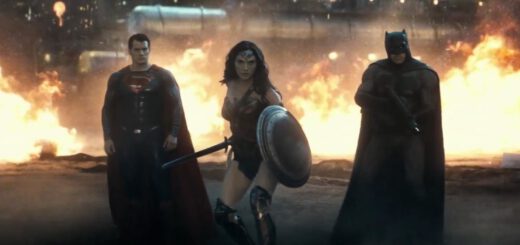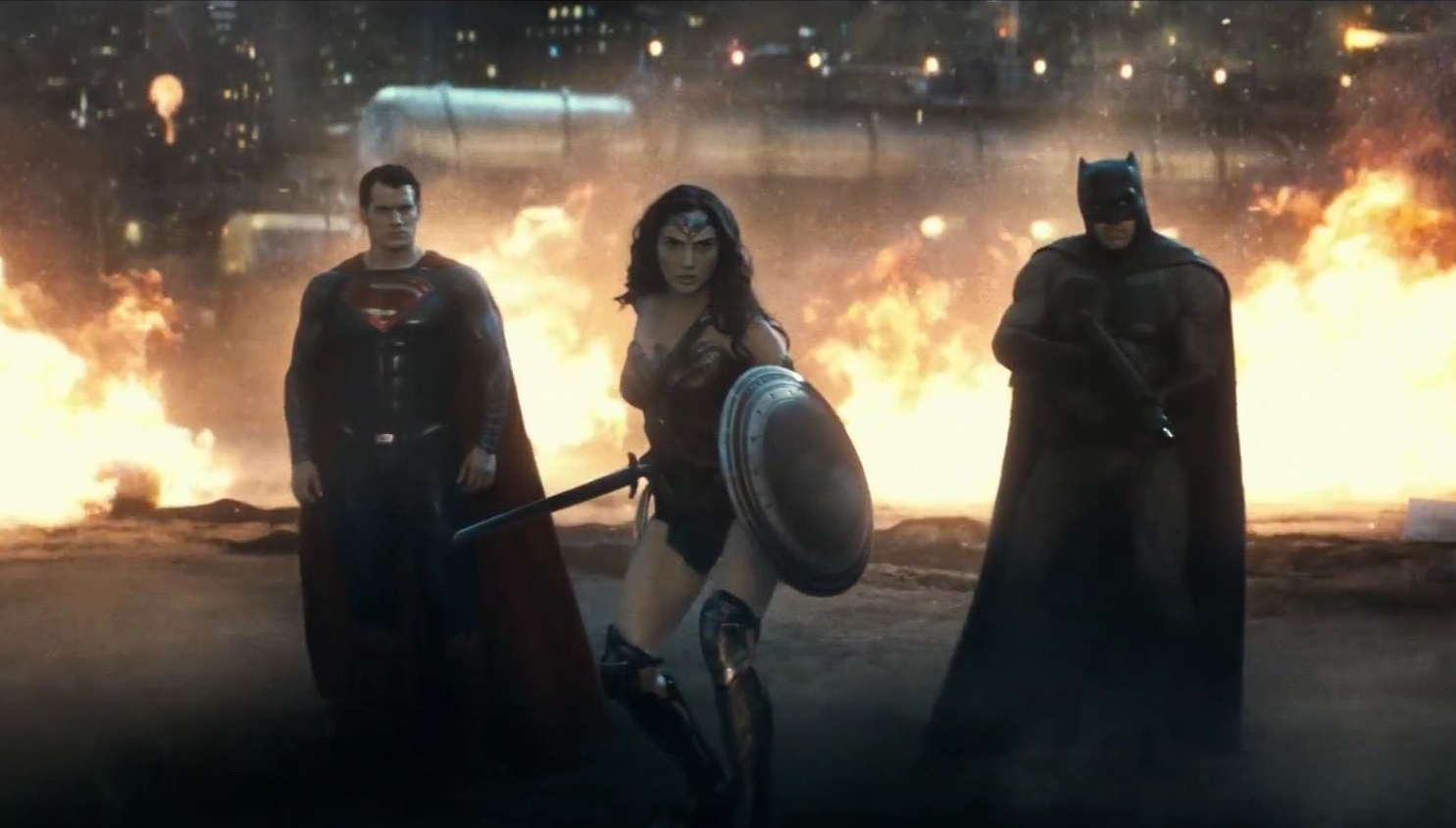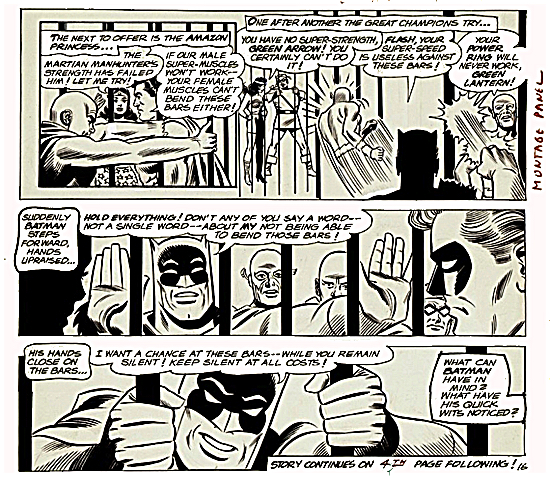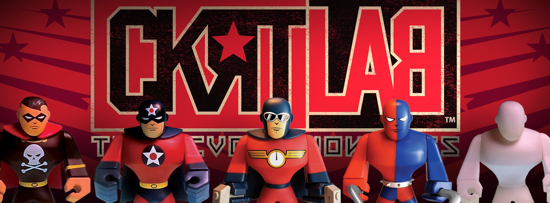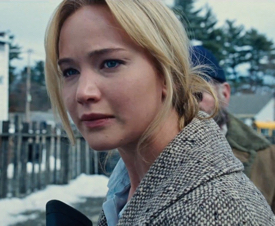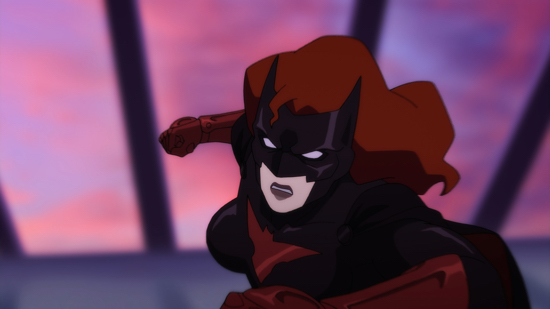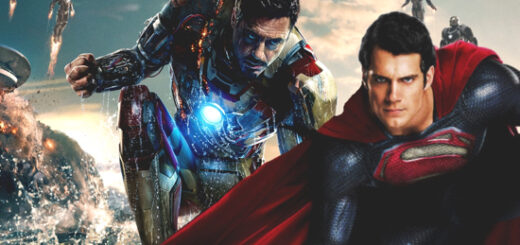Bob Ingersoll The Law Is A Ass #389
WE ARE ROBIN THE CRADLE
Now I know the answer to the question.
For years people have been asking me, what kind of laws would the Marvel or DC legislatures – federal, state, or local – have passed in light of the super-powered activities in their respective universes?
Now you know the question.
So, what’s the answer? Well, after what happened in the Robin War story that ran through several of the Batman family of books earlier this year, I deduced what the answer to that question must be. A two-thirds supermajority of Congress must have passed an amendment to the Constitution. Then a three-fourths supermajority of the fifty states ratified said amendment and the amendment became part of the Constitution, the supreme law of the land.
What did said amendment say? Again, based on what happened in “Robin War,” it must have said, “Hey, you know that whole Bill of Rights thing? Offer void where prohibited.”
Seriously, there can be no other explanation for what happened in “Robin War.”
Now, if you’re good, you should also know the next question: What happened in “Robin War?” And I’ll get to that. But before I can answer that question, I have to tell a little of what happened in We Are Robin, the comic book off of which “Robin War” spin-off spun.
We Are Robin was a comic book about an African-American teenager named Duke Thomas, who was so inspired by Batman and his succession of Robin sidekicks that he created his own startup comprised of teenage crime fighting vigilantes. Everyone in the group adopted the non du guerre Robin and wore something with an identifiable element of the Robin costume on it. Maybe a red shirt or hoodie or baseball cap. But something that was red and had the Robin insignia on it. The Robins fought crime in Gotham City, and spouted the team’s catchphrase, “I am Robin,” more often than a pod of whales with a dozen extra blowholes.
Which leads us to “Robin War.” In Robin War #1, one of the Robins stopped an armed robbery. The Robin subdued the robber and had taken his gun. That’s when an armed police officer entered the store and, upon seeing two masked people in the store one of whom was holding a gun, made the not unwarranted assumption that both the actual perp and the Robin were robbin’ the store. While the police officer tried to make an unwarranted arrest – well, it was a warranted arrest, the officer just didn’t have a warrant – the Robin didn’t put down the gun as ordered and tried to explain that he was one of the good guys and had apprehended a robber. The robber used the confusion to try to escape. Which created a “shots fired” situation. Unfortunately, shots were fired by the Robin into the officer, accidentally killing him.
That’s when the Gotham City Council, led by Councilwoman Noctua, passed the most sweeping and unconstitutionally overreaching laws I’ve ever seen. Which is why I hypothesize that there must have been a “void where prohibited” amendment added to the Constitution. Otherwise the “Robin Laws,” unlike a real robin, could never have gotten off the ground.
The laws placed City Council “in charge of all police matters related to Robin matters.” They also made possessing or wearing “Robin paraphernalia” illegal. “Anyone seen in a Robin mask, or a Robin ‘R’ or whatever they wear [would be] immediately identifiable as a delinquent and subject to arrest.”
How broad and overreaching were these laws? Well, when Duke Thomas was walking down the street, he was arrested simply for wearing red sneakers. “Red means Robin. And in Gotham, Robin means you’re under arrest.” The shoes in question had no Robin indicia on them. No Robin logo. Not even an R. Duke was arrested simply for wearing red shoes.
In a world where the Constitution hasn’t been declared void, this law would be struck down as unconstitutionally overbroad. You can’t make it illegal for all people to wear red clothing, simply because some kids wore red clothing to play at being Robin. Under the law, people who were wearing red for perfectly legal reasons would be subject to arrest. Ringmasters could be arrested. Revolutionary War reenactors. Hell, firemen could be arrested for wearing their red suspenders.
In the height of the Crips and Bloods wars, did Los Angeles make it illegal to wear black or red? No. If they had Wayne Gretzky would have won the 1993 Stanley Cup playing for the San Quentin team, not the Los Angeles Kings.
Know what else would be unconstitutional? City Council ordering the police department to search every locker in a school “for evidence of any delinquent activity.” So guess what happened in Gotham City schools after the Robin Laws were enacted?
I know in New Jersey v. T.L.O., the Supreme Court of the United States ruled that a school environment does permit some easing of the search and seizure requirements of the Fourth Amendment. But even T.L.O. didn’t authorize the wholesale abandonment of the Fourth Amendment shown in this story. Or the sort of blanket searches committed in this story. Hell, they weren’t even searching for blankets.
The T.L.O. court said a high school search is reasonable if 1) there are reasonable grounds for believing the search will reveal evidence that the student or students whose property is being searched violated the law and 2) the search is related to the objectives of the search and not excessively intrusive. The searches conducted in this story didn’t meet either of the T.L.O. criteria.
Search of every locker in a school to find out whether any of the students might possibly have Robin paraphernalia? Not based on reasonable suspicion. Search every locker even those of students you have no reason to believe might be Robins? Excessively intrusive. Let silly things like the Constitution stop you from doing whatever you want? Naw, constitutions are for wussies.
Then there was the question of what the Robin Laws allowed Gotham City to do with the Robins after most of the Robins were arrested. In Detective Comics v2 #47, we learned the Robins were being kept in supermax jail cells suspended from the ceiling like bird cages. Because, well when you’re dealing with a bunch of kids wearing bird-motif costumes, why be subtle?
Some of these Robins were under the age of 18, so juvenile offenders. Juveniles are treated differently than adults. When a juvenile is arrested in New Jersey, the courts must hold an initial detention hearing by no later than the following day and both the juvenile and the juvenile’s parents or legal guardians must be present. They can’t be held in supermax conditions indefinitely. Moreover, the parents or legal guardians of a juvenile must be notified of the juvenile’s arrest and must be present anytime the juveniles are questioned. The juveniles can’t be held incommunicado.
You know, the Robin Laws in this story were so extreme and sweeping and illegal and unconstitutional, you’d think that Councilwoman Noctua, who spearheaded the laws, had her own secret agenda and was benefitting financially from the chaos the laws created. Turns out –
SPOILER, THAT’S PROBABLY NOT MUCH OF A SPOILER, ALERT!
Noctua was lining her pocketbooks from the chaos created by the Robin Laws and using the laws to earn a place in the Court of Owls.
Of course, that doesn’t explain why the rest of the Gotham City Council agreed to these patently unconstitutional laws. But I only explain why legislatures in comic books can’t do the things they’re shown doing. I don’t try to explain why they do them. That way lies madness.



